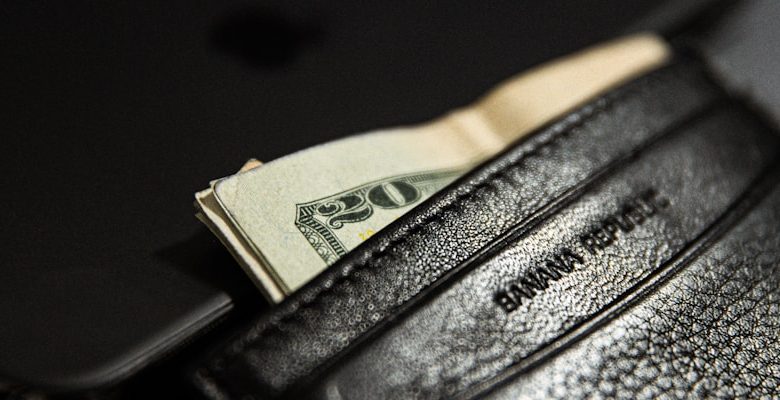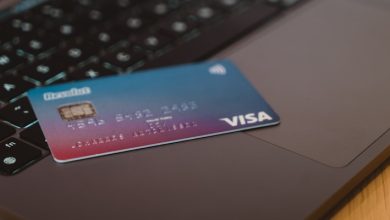The Future of Wallet Security: Trends and Innovations

- The Evolution of Wallet Security: A Look into the Past and Future
- Biometric Authentication: The Next Frontier in Wallet Security
- Blockchain Technology: Revolutionizing Wallet Security
- AI-Powered Solutions: Enhancing Wallet Security Measures
- Contactless Payments: Balancing Convenience and Security
- Cybersecurity Threats: Challenges and Solutions for Wallet Security
The Evolution of Wallet Security: A Look into the Past and Future
In the past, wallet security was a simple concept. People carried physical wallets with cash and cards, relying on their vigilance to prevent theft. However, with the rise of digital wallets and online transactions, security measures had to evolve to keep up with the changing landscape.
One of the earliest advancements in wallet security was the introduction of encryption technology. This allowed sensitive information to be stored securely and transmitted safely over the internet. As hackers became more sophisticated, multi-factor authentication became a common practice to add an extra layer of protection.
Looking into the future, biometric authentication is set to revolutionize wallet security. By using fingerprints, facial recognition, or even iris scans, users can ensure that only they have access to their digital wallets. Additionally, blockchain technology is being increasingly used to secure transactions, making it nearly impossible for fraudulent activities to occur.
Overall, the evolution of wallet security has been a journey from physical to digital, from simple passwords to complex encryption methods. As technology continues to advance, so too will the measures taken to protect our financial assets. The future of wallet security holds great promise for keeping our money safe in an increasingly digital world.
Biometric Authentication: The Next Frontier in Wallet Security
Biometric authentication is emerging as the next frontier in wallet security, offering a more secure and convenient way to access your funds. By using unique physical characteristics like fingerprints, facial recognition, or iris scans, biometric authentication adds an extra layer of protection to your digital wallet. This technology is gaining popularity due to its reliability and ease of use, making it a promising solution for keeping your financial information safe.
Biometric authentication provides a personalized and secure way to access your wallet, reducing the risk of unauthorized access or fraudulent transactions. With biometric data being unique to each individual, it is much harder for hackers to bypass this security measure compared to traditional methods like passwords or PIN codes. This added security feature gives you peace of mind knowing that your funds are safe and protected.
In addition to enhancing security, biometric authentication also offers a more user-friendly experience. Gone are the days of having to remember complex passwords or worry about losing your wallet. With biometric technology, all you need is a quick scan of your fingerprint or face to access your funds, making transactions quick and hassle-free. This convenience factor is driving the adoption of biometric authentication in the digital wallet space.
As the demand for secure and user-friendly wallet solutions continues to grow, biometric authentication is poised to become a standard feature in digital wallets. With its combination of advanced security measures and ease of use, biometric authentication is reshaping the future of wallet security. Stay ahead of the curve by embracing this cutting-edge technology and enjoy a safer and more convenient way to manage your finances.
Blockchain Technology: Revolutionizing Wallet Security
Blockchain technology is revolutionizing wallet security by providing a decentralized and transparent system for storing and managing digital assets. With blockchain, each transaction is securely recorded on a distributed ledger, making it nearly impossible for hackers to manipulate or steal funds. This increased level of security gives users peace of mind knowing that their cryptocurrency holdings are safe from cyber threats.
One of the key features of blockchain technology is its use of cryptographic algorithms to authenticate and secure transactions. This ensures that only authorized users can access and transfer funds, reducing the risk of unauthorized activity. Additionally, blockchain wallets are protected by private keys, which act as digital signatures to verify the identity of the user. This two-factor authentication process adds an extra layer of security to prevent fraudulent transactions.
Another advantage of blockchain technology is its immutability, meaning that once a transaction is recorded on the blockchain, it cannot be altered or deleted. This makes it easier for users to track their transaction history and detect any suspicious activity. By leveraging the power of blockchain, wallet security is strengthened, providing a more robust defense against potential threats.
In conclusion, blockchain technology is transforming the landscape of wallet security by introducing innovative solutions that prioritize user safety and protection. By harnessing the decentralized nature of blockchain technology, users can enjoy greater peace of mind knowing that their digital assets are secure and protected from malicious actors. As the adoption of blockchain technology continues to grow, the future of wallet security looks promising and poised for further advancements.
AI-Powered Solutions: Enhancing Wallet Security Measures
AI-powered solutions are revolutionizing wallet security measures by utilizing advanced algorithms to detect and prevent fraudulent activities. These intelligent systems can analyze user behavior patterns, identify anomalies, and automatically flag suspicious transactions for further investigation.
By harnessing the power of artificial intelligence, wallet providers can offer an extra layer of protection to their users, ensuring that their funds are safe and secure. Machine learning algorithms can adapt and evolve over time, continuously improving their ability to detect and respond to new threats.
With AI-powered solutions, wallet security measures are becoming more proactive and effective in safeguarding against cyber threats. This technology enables real-time monitoring of transactions, helping to mitigate risks and prevent unauthorized access to sensitive financial information.
Contactless Payments: Balancing Convenience and Security
Contactless payments have become increasingly popular in recent years due to the convenience they offer to consumers. By simply tapping their cards or mobile devices at checkout, people can quickly and easily make purchases without the need to enter a pin or swipe a card. However, with this convenience comes concerns about security.
Businesses and consumers alike are constantly looking for ways to balance the convenience of contactless payments with the need for security. One way this is being addressed is through the implementation of advanced encryption technologies that protect sensitive payment information from being intercepted by hackers.
Another method being used to enhance security in contactless payments is the introduction of biometric authentication, such as fingerprint or facial recognition. These technologies add an extra layer of security by ensuring that only the authorized user can make a payment.
Cybersecurity Threats: Challenges and Solutions for Wallet Security
In the realm of wallet security, cybersecurity threats pose significant challenges that must be addressed to safeguard sensitive information and assets. One of the primary concerns is the risk of hacking, where malicious actors attempt to gain unauthorized access to digital wallets to steal funds. Phishing scams are another common threat, where individuals are tricked into revealing their login credentials or private keys through deceptive emails or websites.
To combat these cybersecurity threats, there are several solutions that can be implemented to enhance wallet security. Utilizing multi-factor authentication adds an extra layer of protection by requiring users to verify their identity through multiple means, such as a password and a fingerprint scan. Encryption is also crucial for securing data stored in wallets, as it encodes information in a way that only authorized parties can access it.
Regularly updating wallet software is essential to patch any vulnerabilities that could be exploited by cybercriminals. Additionally, being cautious about sharing personal information online and avoiding suspicious links or downloads can help mitigate the risk of falling victim to phishing attacks. Educating users on best practices for wallet security is vital in creating a culture of awareness and vigilance.
In conclusion, the landscape of wallet security is constantly evolving as cyber threats continue to become more sophisticated. By staying informed about potential risks and implementing robust security measures, individuals can better protect their assets and information from unauthorized access. It is essential to remain proactive and vigilant in the face of cybersecurity threats to ensure the safety and integrity of digital wallets.



